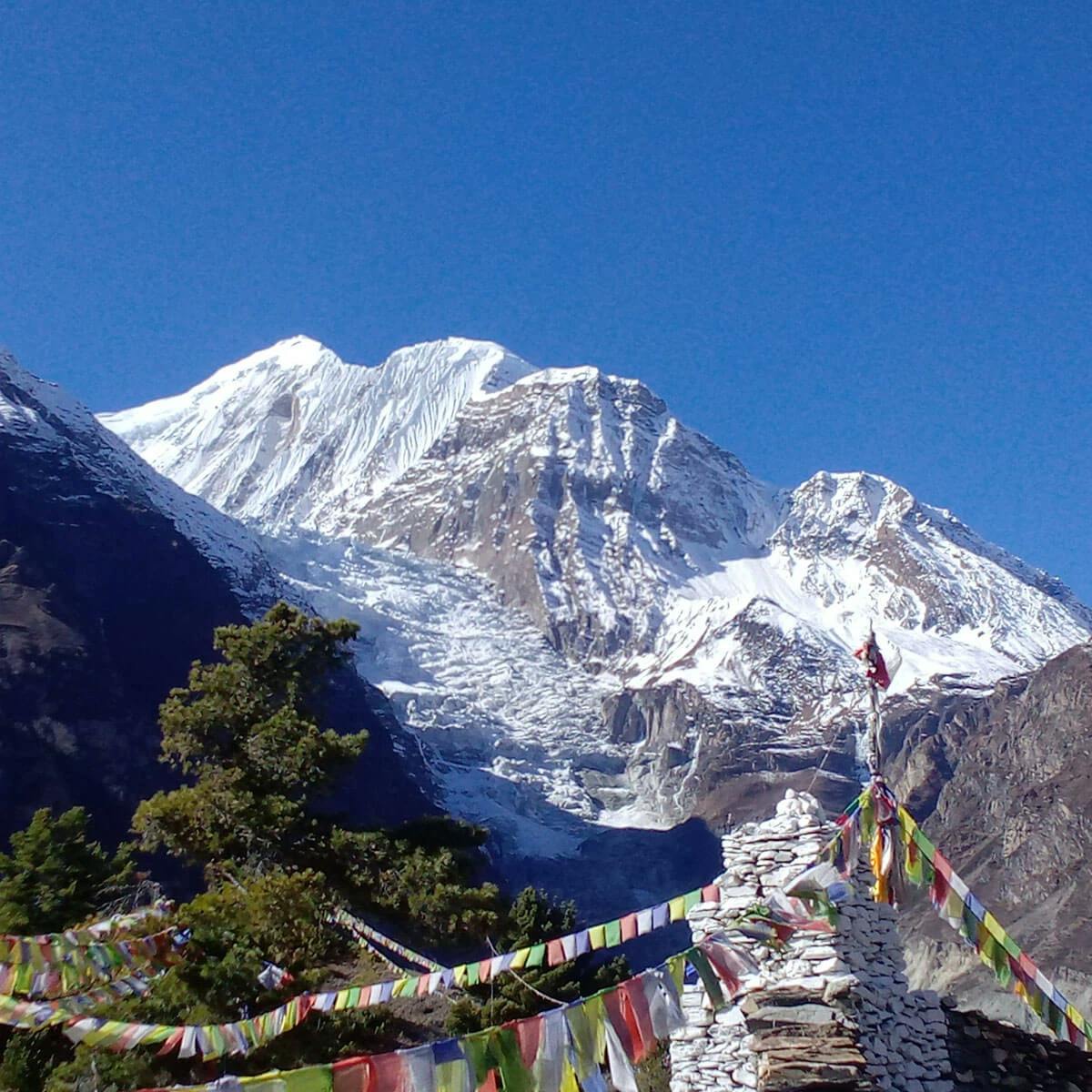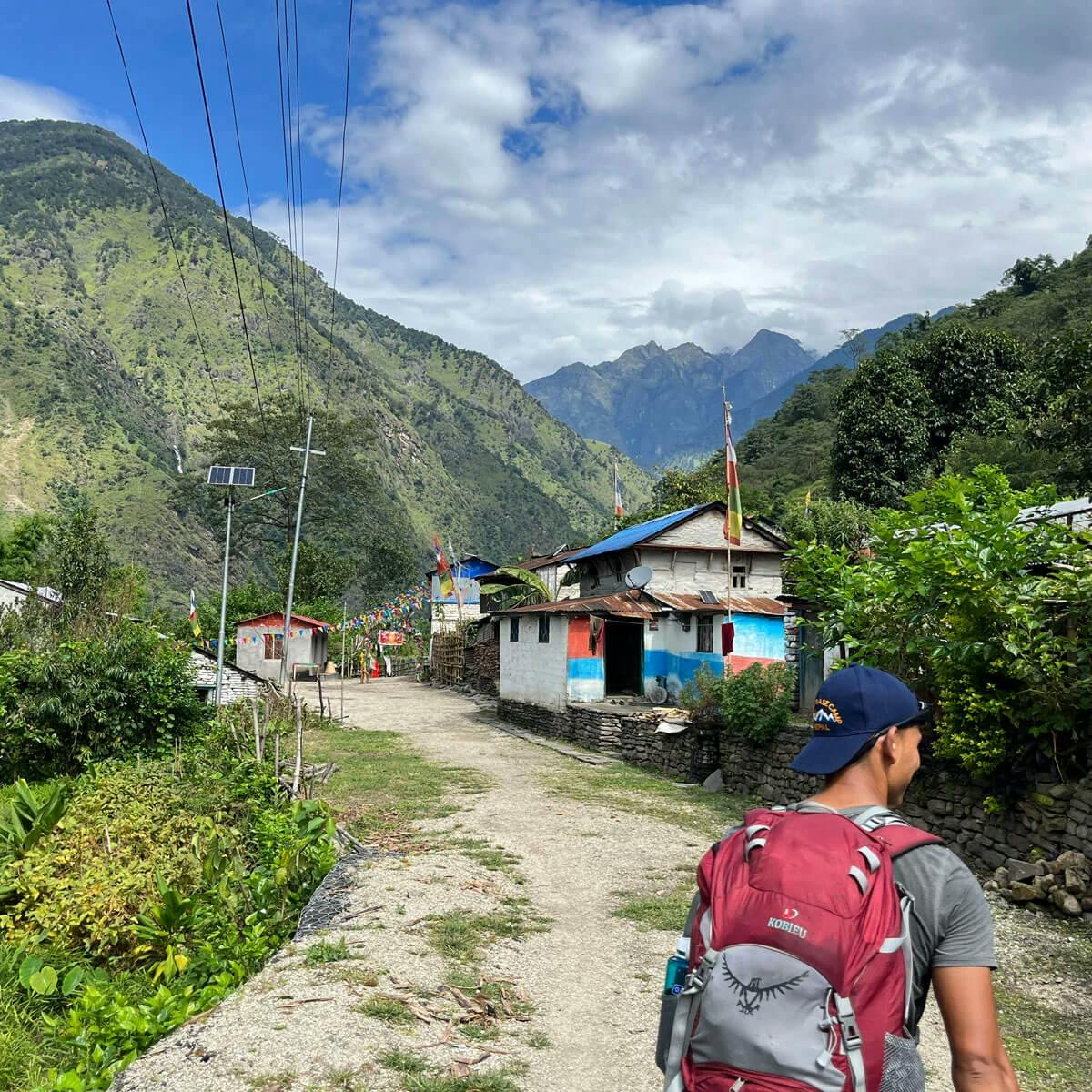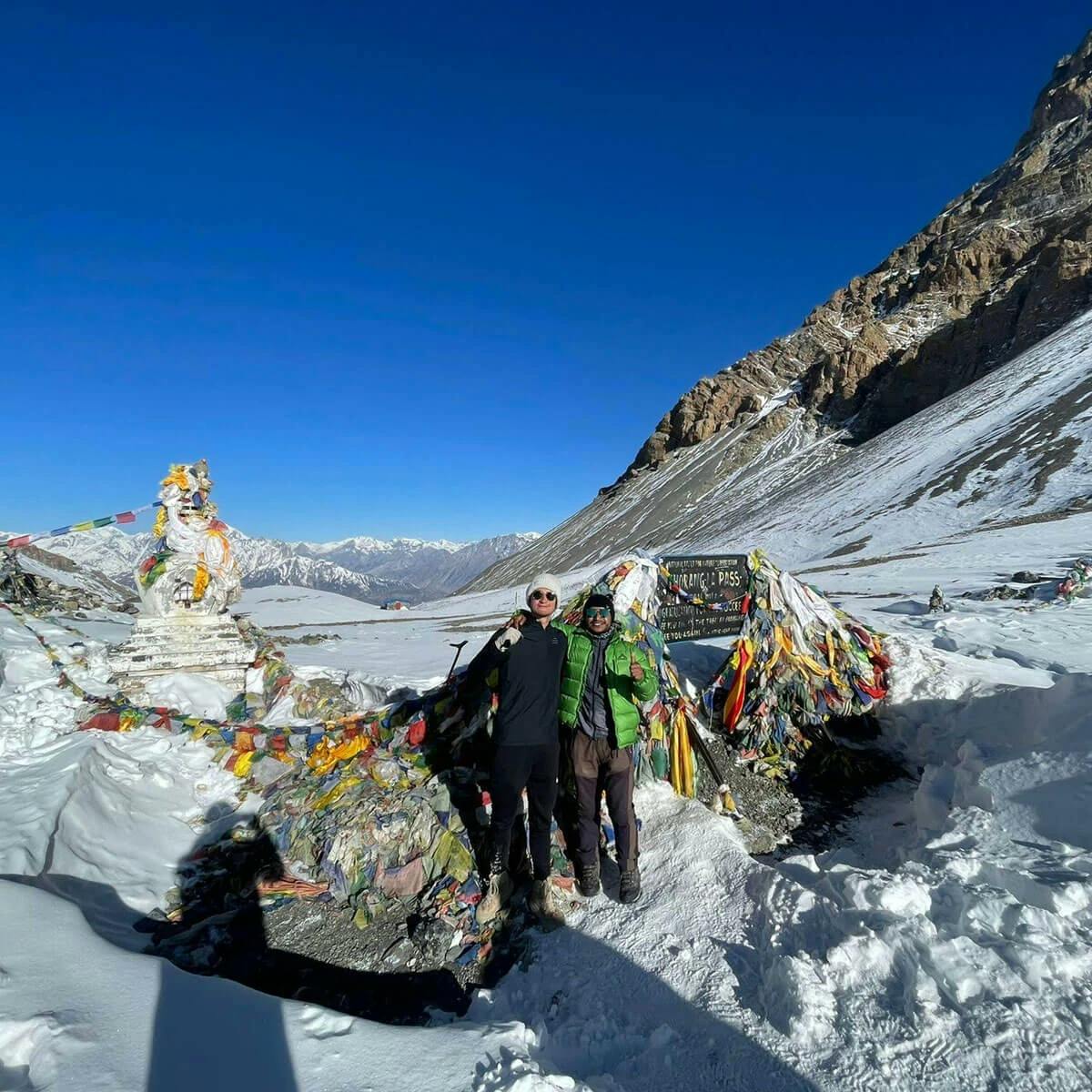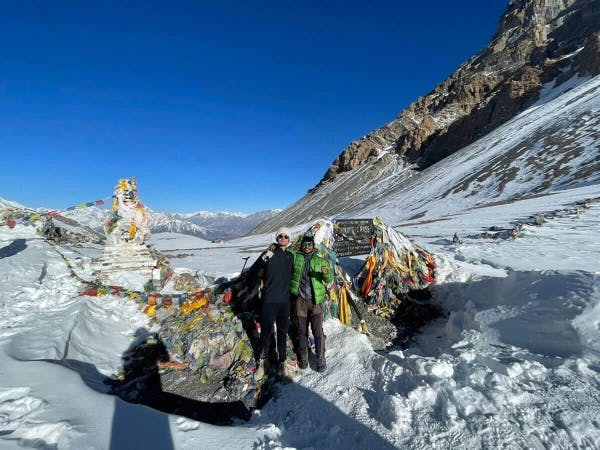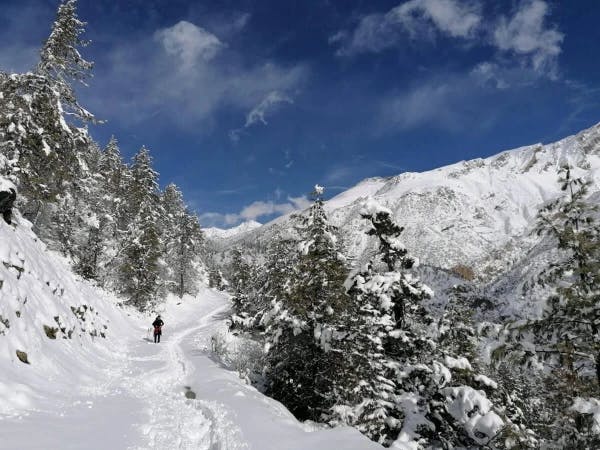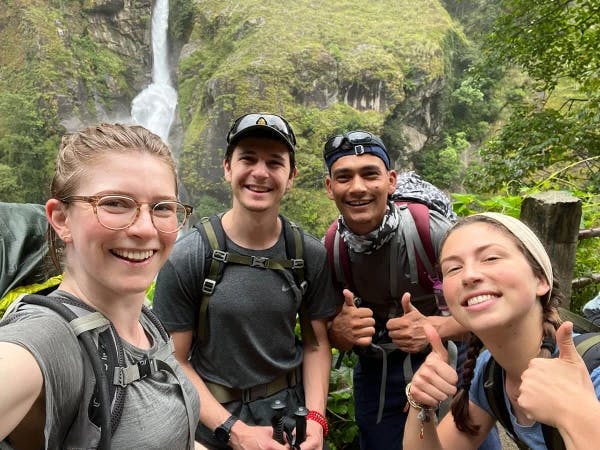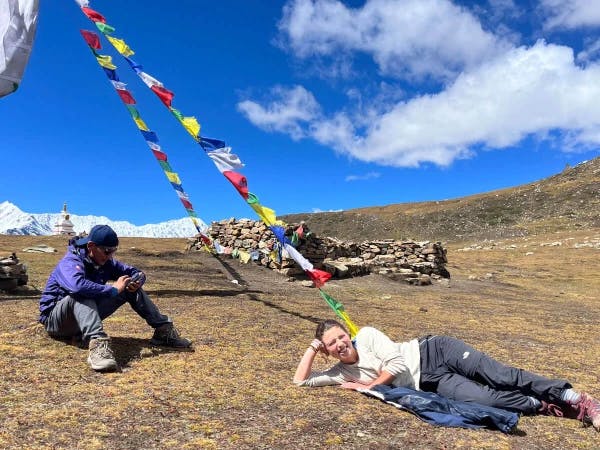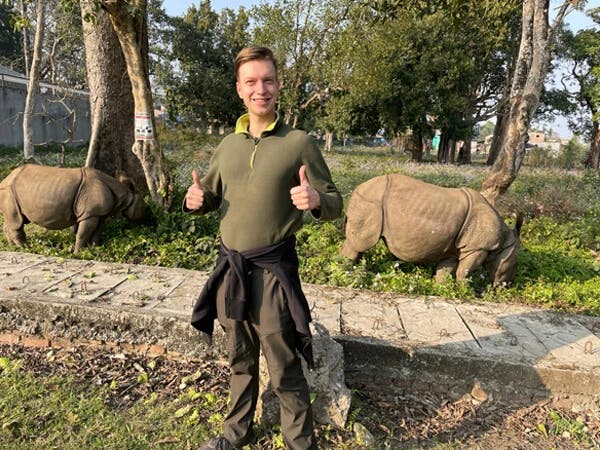My boyfriend and I did the Annapurna Circuit in December and we honestly had an amazing experience, all thanks to
Known for its breathtaking landscapes, Himalayan panorama, and dramatic deep canyons, the Annapurna Circuit Trek is one of those classic adventures that will leave you awe-inspired for sure. The journey that whirls around the tenth highest mountain in the world, Mt. Annapurna, follows comparatively isolated mountain routes offering the best tranquil nature and is among one of the most popular trekking destinations in the world.
Once, it was a forbidden land governed by Khampa guerrillas from Tibet, which became accessible in Nepal for outsiders only after 1977. Therefore, in the initial days, the Annapurna Circuit Expedition used to commence from Dhumre, taking 20 to more days. Our 12-day Annapurna Circuit Trek can be called the mini version of it because it does not miss any highlights of the Annapurna Trekking region.
As an ancient territory operated by Khampas from Tibet, during the journey to the Annapurna Circuit Trek, one will get to learn the enriching Tibetan way of life deeply ingrained in the Manang and Mustang valleys, which also has a slim chance of encountering rare and endangered blue sheep and snow leopards in Yak Kharka.
Hence, the Annapurna Circuit voyage is mostly preferred by every trekker who desires to take on daring expeditions in the Nepalese Himalayan region while relishing the varied topography, climatic zones, Himalayan culture, and scenery. In addition to the fascinating panorama mostly dominated by the seventh and tenth tallest peaks in the world, Mt. Dhaulagiri (8,167 m) and Mt. Annapurna (8,061 m),
Therefore, the 12-day tour to the Annapurna Circuit is worth the challenge, promising you the discovery of hidden mountain life that fills and contents the hearts of each trekker while the Himalayas come alive in full glory on overcoming the major challenge of the high altitude in the Thorong La Pass at 5,416m.
Highlights
- Extraordinarily beautiful drive from Kathmandu to Jagat and Pokhara back to Kathmandu.
- Traverse through the beautiful traditional villages of the Marshyangdi River valley.
- Watch the spellbinding Gangpapurna Glacier and lakes from the village of Manang.
- Walk through the scenic and serene yak pasture land.
- Cross one of the most exciting and rewarding mountain passes in Annapurna Nepal's Himalayas, called Thorong La Pass (5,416m).
- Seek blessing in the sacred temple of Muktinath with 108 forever-flowing stone sprouts and an eternal flame.
- Explore the rich natural diversity of the Annapurna Conservation Area, passing by several enticing forests of oak, rhododendron, and pine.
- Enjoy the warm hospitality of the Himalayan locals, such as Gurung, Magar, and Thakali, and their ethnic rural lifestyle.
- Roam around the ultimate tranquility of the Jomsom, known for its apple orchids.
- Incredible flight or drive from Jomsom to Pokhara.
- Stroll around the tourist paradise of Nepal, Pokhara.
- The timeless beauty of magnificent Annapurna and its ranges, Dhaulagiri, Lamjung Himal, Thorong Peak, Nilgiri, Chulu East and West, and many more.
What to expect at the Annapurna Circuit Expedition?
The Annapurna Circuit Expedition is a well-known trekking route in Nepal that provides a wide array of experiences, scenery, and engrossing cultural exchange that grants you the heavenly sight of the surrounding Himalayan peaks, some belonging to the list of the top ten eight-thousanders in the world, such as Mt. Annapurna (8,091m), the tenth tallest peak in the world, and Mt. Dhaulagiri (8,167m), the seventh largest summit globally.
The journey offers a variety of viewpoints and perspectives to admire stunning peaks, passing by several traditional villages, gompas, and landscapes. Basically, you can expect:
Sweeping views of the Himalayas
If the Annapurna Circuit stands out for one precise reason, it would definitely be the panoramic views of the Himalayan giants from several trailheads, which are the Annapurna massif: Annapurna I (8,091 m/26,545 ft), Annapurna II (7,937 m/26,040 ft), Annapurna III (7,555 m/24,787 ft), and Annapurna IV (7,525 m/24,688 ft), along with:
- Dhaulagiri I (8,167 m/26,795 ft)
- Dhaulagiri II, III, IV, and V
- Machapuchare (6,993 m/22,943 ft)
- Nilgiri North (7,061 m/23,166 ft)
- Gangapurna (7,455 m/24,457 ft)
- Tilicho Peak (7,134 m/23,406 ft)
- Hiunchuli (6,441 m/21,132 ft)
- Manaslu (8,163 m/26,781 ft)
- Lamjung Himal (6,931 m/22,736 ft)
Some of these peaks look more striking and closer to the Thorong La Pass, gratifying the whole challenging journey to the high mountain pass.
Rich cultural encounter during the Annapurna Circuit round-up trek
The Annapurna circuit area is home to various ethnic communities in Nepal. The low reaches are often dominated by Gurung settlements such as Nayapul and Chhomrong, including the Magar people known for their unique culture, traditional dance, and music, along with the distinctive architectural Tibetan-style houses.
As you progress forward along the trail, you will be blown away by the cultural treasure of the Annapurna region in Jomsom and Muktinath, which is primarily inhabited by Thakali people who possess distinctive costumes, art, and cuisines. Most of the locals are guided by Hinduism and Buddhism, as showcased by several ancient monasteries, prayer wheels, typical Mani walls, and Buddhist scriptures amidst prayer flags.
Therefore, along the trip to the Annapurna Circuit, you will be enjoying the enriching cultural experience while stopping by various tea houses, local lodges, monasteries, and temples opened and managed as well as preserved by the Himalayan natives while you immerse yourself in the interaction with them where our Sherpa guides fill the communication gap.
Learn about acute mountain sickness in the Himalayan Rescue Association (HRA)
Acute mountain sickness is a real deal on higher Himalayan expeditions such as the Annapurna Circuit. Usually, our Sherpa guides are well-trained and knowledgeable about the symptoms, prevention, and way of dealing with them and will be briefing you along the way.
However, if you want more all-inclusive detailing of acute mountain sickness or altitude sickness, the Himalayan Rescue Association is a must-visit, which offers medical aid in emergencies and advocates for trekkers’ and climbers' safety throughout the Himalayan area.
The occurrence of mountain sickness is normal when people climb high altitudes too quickly without proper acclimatization, which tends to be a serious hazard when not taken care of. This includes symptoms such as unusual fatigue, nausea, dizziness, slow or fast breathing, problems sleeping, etc.
Therefore, we insist that you visit one of the Himalayan Rescue Associations (HRAs) present in the Annapurna region before hitting the high pass, such as Thorong La, on the sixth day, where a walk here is likely to help you adapt to the Himalayan atmosphere as well.
Braga Monastery and Lifestyle of Monks
Braga is considered the largest monastery in the Annapurna region, lying nearby the classic route to the Annapurna Circuit Trek. It is believed to have a history dating back numerous centuries, known for its exotic architecture, intricate metalwork, and woodwork, as well as the collection of several religiously significant artifacts.
The monastery is home to monks practicing Vajrayana Buddhism, where you can see them reciting ancient scriptures or performing daily rituals and prayers in front of impressive idols or thangkas (Buddhist paintings) of Buddhist deities. Furthermore, the whole village named after the monastery also allows you to experience the customs of the Manangi people, acknowledged for their rich cultural legacy and kind demeanor.
Though you will be making a quick pass by this naturally and religiously significant monument of the Annapurna Conservation Area in our 12-day Annapurna Circuit Trip, you are free to explore the area on the day allocated for acclimatization the next day as an optional side hike, where you are likely to find the life of monks inspirational for sure.
Scenic landscapes of the Annapurna region
Nepal’s Annapurna region is renowned for its marvelous and diverse scenery. Hiking among the several routes to explore the region, such as the Annapurna Base Camp Trek - 10 Days provides you with a varied range of natural characteristics, such as terraced fields, lush subtropical woods in the lower region, alpine meadows in the middle region, and high-altitude desert lands in the Annapurna upper Himalayas.
It will be an amazing visual experience while you venture through the woods of oak, rhododendron, pine, and maple in the spring, presented with a blazing gaze of snowy mountains, culturally and naturally profound valleys, as well as charming settlements of some of the classy Himalayan indigenous people.
Awesome side trip to Parken Gompa
Elevated at 3,945 m/11,466 ft above Manang, Parken Gompa is one of the most spectacular places in Nepal and offers broad views of the tall Himalayan peaks, including Annapurna II, Trake Kang, and Gangapurna.
Hidden on a mountain wall, Parken Gompa is a secluded holy Buddhist stupa where one can be enlightened by the Buddhist monks. A visit here is most likely to reduce the chances of acute mountain sickness while crossing Thorong La Pass.
Locals believe donating or offering anything before you begin an exhilarating climb shields you from harm. Therefore, with Ammonite Adventure & Treks Pvt. Ltd., you can hike up to this religiously and naturally magnificent gompa as suggested by the mountain guide that day during our 12-day Annapurna Circuit Traverse.
Conquer the challenging Thorong La Pass
Located 5,416m above sea level in the central part of the Annapurna Circuit trekking trail that connects the Manang district to the east with the Mustang district to the west is Thorong La Pass.
Although crossing the Thorong La Pass is a very difficult and physically laborious part of the Annapurna Circuit Pilgrimage, it is one of the trek’s major highlights and rewards you with exceptionally mind-blowing mountain vistas and scenery that is worth each effort.
Seek blessing in the serene and spiritual ambiance of Muktinath Temple
At the bottom of Thorong La Pass, in the lap of the Annapurna ranges, lies one of the most sacred Hindu and Buddhist pilgrimage sites, called Muktinath Temple, which is around 3,800 m tall and is considered the area of liberation, or Mukti Kshetra.
The location of the temple is tranquil and packed with spiritual energy, surrounded by breathtaking vistas, making it an ideal destination for reflection and introspection. Therefore, trekking to Muktinath itself is a spiritual finding of yourself, which is more extraordinary when combined with the Annapurna Circuit.
The whole experience is enhanced by a sense of pilgrimage brought about by the physical strain and jaw-dropping scenery that takes you past historic monasteries, lovely dwellings, and gorgeous natural amphitheaters.
According to Hindu mythology, the 108 stone sprouts of the shrine of Muktinath have karma-cleansing divine powers that can offer you good fortune alongside the ever-burning flame and hence observe a significant number of Hindu and Buddhist pilgrims throughout India, Nepal, and around the globe.
Itinerary for the Annapurna Circuit Trek
The circuit trek starts from Jagat after a picturesque drive from Kathmandu, passing by Dharapani, Chame, and Manang, following the Marsyandghi River Valley, which will host you for a night each day. The Annapurna Circuit Package's map section provides an overview of the route you will take.
In Manang, you will be relishing the acclimatization day, where you will be presented with several optional side trips to Parken Gompa, Braga Monastery, or a visit to the Himalayan Rescue Association (HRA) to be more enlightened on the possible outcome of acute mountain sickness (AMS) and ways to handle it.
It can also be called the preparation day before crossing the physically laborious Thorong La Pass and making a way through its base, known as Thorong Phedi after Yak Kharka from Manang. Though the trek to reach the pass is a comparatively strenuous part of the overall Annapurna Circuit Journey, it is one of the most favorite sections preferred by every adventurer, with obvious reasoning.
The views are magnificent, be it the glory of the peaks standing tall above all or the valleys below, alongside the scenic glaciers descending to the holy Hindu and Buddhist temple of Muktinath in the mythical location of the Annapurna region. Taking a bath in the continuously flowing 108 sprouts here is believed to end the karmic life cycle of a human, which is not necessary unless and until you are a person with a belief in Hinduism or Buddhism.
From Muktinath, you will move forward to explore the valley famous for its apple orchids, Jomsom, through lush rhododendrons, birch, and magnolia. After a fruitful day in Jomsom, you will drive or fly back to Pokhara, which awaits a new adventure with its infamous activities such as boating, kayaking, canoeing, and many more.
The 12-day Annapurna Circuit Trek itinerary concludes with a drive back to Kathmandu, with equally mesmerizing scenarios tracing the bank of the Trishuli River while you move farther from the mountain vistas that are visible till you leave Nepal.
Cost for Annapurna Circuit Hike
The standard 12-day Annapurna Circuit Trek cost is USD 1175 per person, and you can get a discount based on the size of your group with Ammonite Adventure & Treks Pvt. Ltd. For somebody who is completely new to Nepal and looking forward to hiking one of the most popular and physically demanding Annapurna Circuits, our package cost includes the most essential travel and trekking logistics.
The expense of absolute necessities such as food, accommodation, guides, and the cost of trekking permits and transportation used en route are also taken care of by the 12-day cost of the Annapurna Circuit voyage; hence, we believe it is one of the most cost-effective methods for a safe, successful, and satisfying adventure in the Himalayas of Nepal, where we will take care of your needs when you enjoy the raw Himalayan beauty, nature, and culture to the fullest.

